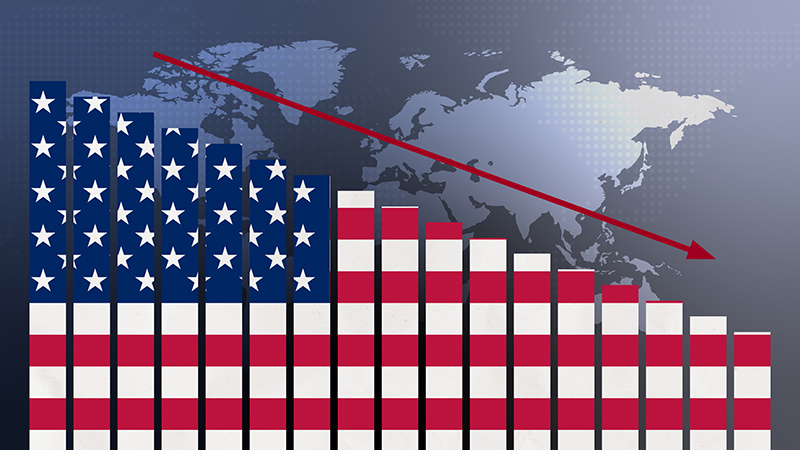The fund manager’s view
Tim Alcorn, head of investment risk, Baillie Gifford
 While prices have been rising at rates not seen since the early 1990s, we have been thinking a lot about how inflation affects share prices and portfolio returns. Whether this is a temporary spike or a shift to a higher inflation world, the war in Ukraine is the latest layer on top of an extraordinary accumulation of inflationary circumstances, such as lengthy quantitative easing and increased geopolitical competition.
While prices have been rising at rates not seen since the early 1990s, we have been thinking a lot about how inflation affects share prices and portfolio returns. Whether this is a temporary spike or a shift to a higher inflation world, the war in Ukraine is the latest layer on top of an extraordinary accumulation of inflationary circumstances, such as lengthy quantitative easing and increased geopolitical competition.
Baillie Gifford owns shares in many kinds of companies, so our approach is not uniform. Our analysis has helped identify and quantify the facets of a company we think matter. They include the ratio of capital spending to performance and profitability, the size of margins, the speed of the business cycle and the ratio of revenues to working capital.
Many of our holdings tend to have strengths that can reduce their vulnerability to inflationary forces and are high-quality businesses with strong balance sheets and high profit margins. Many are disruptive future growth companies, which might not be profitable today but are growing revenues quickly or unleashing new technologies to spur future growth.
They have the ability to bring out innovative products that meet evolving demands while adapting to changes in the supply lifecycles. Those underlying strengths mean that, inflation or no inflation, we are convinced of their growth potential.
Things that make our portfolio companies resilient against inflation include a strong growth trajectory, strong profit margins and no great need for extra capital to grow.
The fund buyer’s view
John Husselbee, head of multi-asset, Liontrust
 Despite the current worldwide spike in inflation, we are not expecting a long-term, persistent increase to a different inflationary environment. That said, we anticipate inflation could remain above central bank targets for some time due to the ongoing war in Ukraine and global supply chain issues.
Despite the current worldwide spike in inflation, we are not expecting a long-term, persistent increase to a different inflationary environment. That said, we anticipate inflation could remain above central bank targets for some time due to the ongoing war in Ukraine and global supply chain issues.
Key questions investors should be asking are when will we see peak hawkishness from central banks, and how successfully can they engineer a soft landing while also curbing inflation?
Economic growth appears to be moderating, but a meaningful inflection point in inflation has yet to follow. We believe levels should start to fall later this year as rolling base effects from energy spikes and supply chain issues work through the system.
Given central banks’ focus on softening inflation figures to direct policy, we can still expect some volatility going forwards.
Our view is that, post corrections, markets should move beyond indiscriminate selling and focus more on what the earnings cycle is telling us. This is typically an environment in which active managers can prove their worth in assessing how inflation is affecting companies globally, and which are best placed to thrive.
The obvious risk lies in tightening monetary policy and slowing growth but there is a sense that share prices, via corrections, have already factored in worsening prospects for 2022.
We also retain a lower-duration position in our fixed-income allocation as central banks prevaricate over the timing and extent of rate rises and tapering. The best antidote for short-term volatility is a diversified portfolio that could also include real assets, which we believe should provide a differentiated return and, importantly, given the backdrop, an element of inflation hedging.
The analyst’s view
Susannah Streeter, senior investment and markets analyst, Hargreaves Lansdown
 The relentless rise in prices continues in the UK, with little sign of a break for consumers who are trying in vain to make ends meet. Inflation has hit double-digits, which is already a painful financial milestone – but the worst is yet to come. Forecasts that eye-watering hikes in energy bills could see inflation race above 18% in January 2023 means the Bank of England won’t easily be able to turn down the heat on rate rises.
The relentless rise in prices continues in the UK, with little sign of a break for consumers who are trying in vain to make ends meet. Inflation has hit double-digits, which is already a painful financial milestone – but the worst is yet to come. Forecasts that eye-watering hikes in energy bills could see inflation race above 18% in January 2023 means the Bank of England won’t easily be able to turn down the heat on rate rises.
Consumers have to make very hard choices about how to spend dwindling budgets, which has big implications for companies in the consumer discretionary sector in particular. The path is set for a scorching summer of price rises to merge into an awful autumn and a winter of woe as many more households fall into fuel poverty.
On Wall Street, recent euphoria seems to be fizzing away as hard-line central bank policymakers issue reminders that inflation remains a big risk. Even though prices appeared to have eased off in July, uncertainty still reigns about the outlook ahead.
Problems are mounting for the French and German economies, as flash PMI estimates show demand has fallen in the manufacturing and services sectors.
A toxic combination of rampant inflation, rising interest rates and energy security worries is likely to be behind the drop. News of more maintenance work on the Nord Stream pipeline, which will reduce gas flows from Russia, means the price of natural gas has rocketed to fresh record highs, shooting way above the level reached soon after Russia’s invasion of Ukraine.
The wealth manager’s view
Eleanor Ingilby, deputy head of portfolio management, Sanlam Wealth
 After years of unorthodox monetary policy, the consequences are starting to manifest. Inflation rose at the fastest pace in 40 years during July of this year, reaching 10.1% in comparison to market expectations of 9.8%. This comes as the Bank of England increased interest rates to 1.75%, which was the biggest increase in 26 years and the sixth consecutive rise.
After years of unorthodox monetary policy, the consequences are starting to manifest. Inflation rose at the fastest pace in 40 years during July of this year, reaching 10.1% in comparison to market expectations of 9.8%. This comes as the Bank of England increased interest rates to 1.75%, which was the biggest increase in 26 years and the sixth consecutive rise.
Pervasive price inflation is now eroding savings, wages, real economic growth and productivity. One of the significant changes Covid instigated was the move by central banks to target average inflation over time, and to allow inflation to run above target. Inflation ceilings morphed into inflation targets, which then shifted to average inflation targets.
Today, consumer price indices are at multi-decade highs, exacerbating the cost-of-living crisis. This puts policymakers in a bind, as they have to balance growth against inflation.
We cannot ignore the structural changes that have driven inflation to these highs and, as the primary inflation driver is excessive government spending, and to a lesser extent regulation assisted by consumer credit, a shallow recession may be insufficient to tame inflation.
A deeper recession, if accompanied by government bailout and subsidies, may also be insufficient, as the recession would contract supply while the government supports demand. The only sure cure would be a spending reduction.
Despite this, market participants are starting to look beyond the current cycle of rate hikes. Instead, they’re factoring in an end to monetary tightening and even the return of rate cuts – even though inflation is yet to peak.
This article first appeared in the September edition of Portfolio Adviser Magazine











